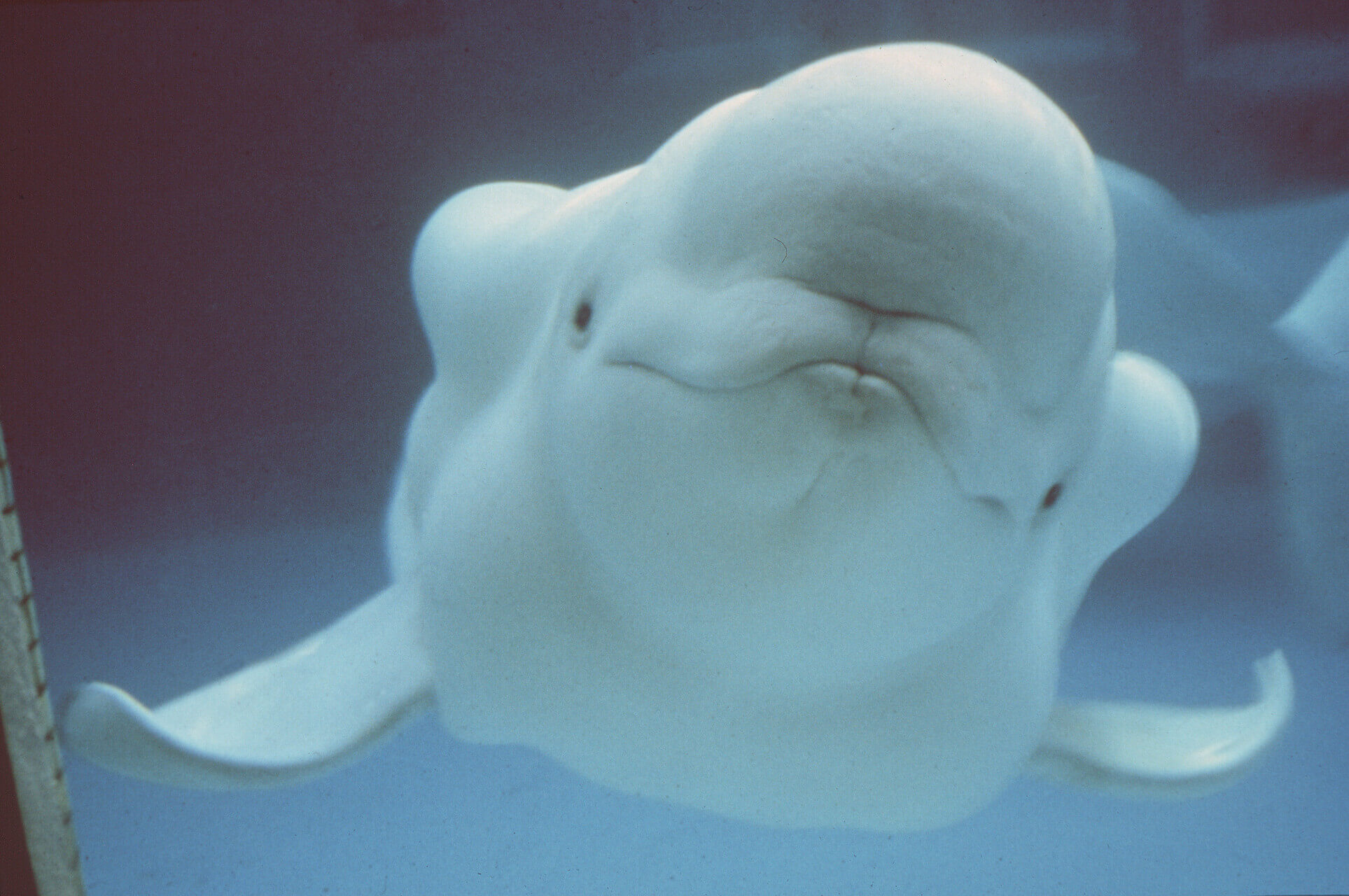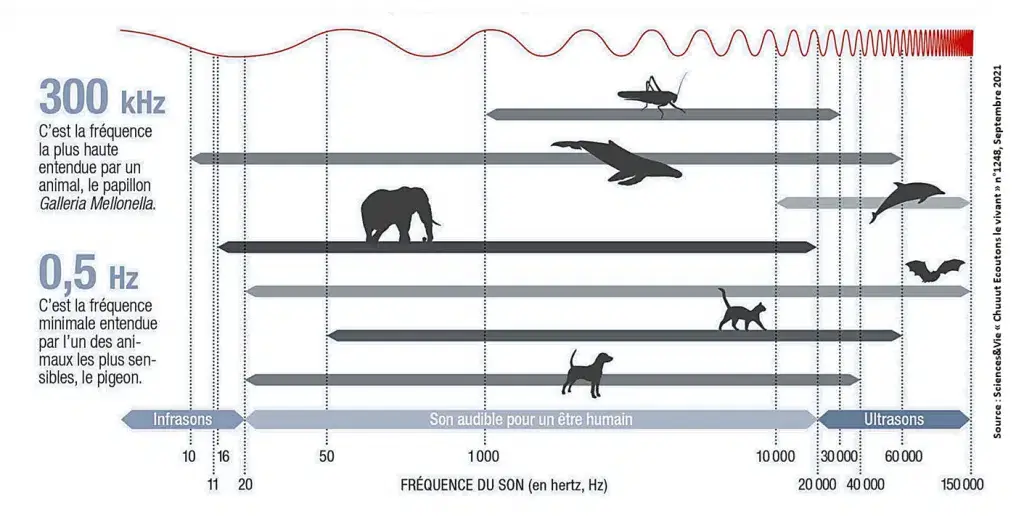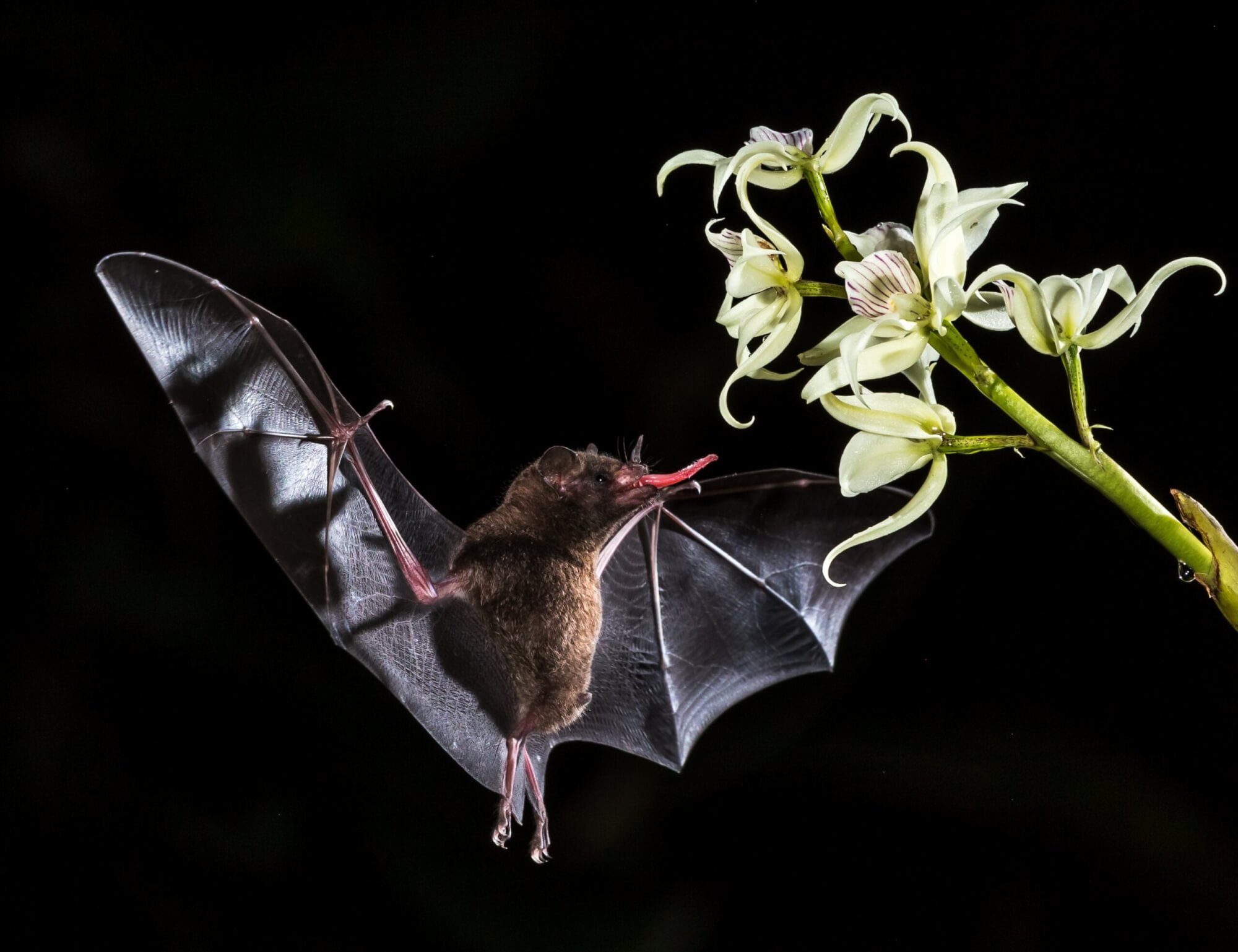Echolocation is used by several animals such as bats, dolphins, toothed whales and some nocturnal birds. This technique allows animals to emit sounds and listen to the subsequent echo produced when it hits an object. Animals use it for hunting, communicating, detecting predators and avoiding obstacles in dark or turbid waters. We know that echolocation in terrestrial and aquatic species have similar functions, but are there any differences between them?
Sound travels 344 metres per second (m/s) in air, as opposed to 1,482 m/s in water. Sound therefore travels 5 times faster in water than in air. Moreover, whales and bats, for example, do not seem to emit the same frequencies. Whales hear sounds with frequencies ranging from 10 Hz (infrasonic) to 60,000 Hz (ultrasonic). The frequency range perceptible to bats is higher, i.e. from 20 to 150,000 Hz. The giants of the seas are therefore masters of emitting low frequencies, while bats specialize in high frequencies. Many insects can detect and respond to the sounds of bats, while most fish and squid do not react to whale signals, though they are able to detect water movements generated by their approaching predators. These differences have an impact on how whales and bats use echolocation.
How do they do it?
Toothed whales echolocate using their melon, the large bulge on their forehead. To do so, they emit sound waves into the water that bounce off various objects and organisms. When the sound strikes an object, it returns to the animal through sound-conducting tissue in the lower jaw. From there, it continues onward to the inner ear. This ability enables the animals to detect objects or prey in their dimly lit environments. Which is precisely what the sperm whale does when it regularly forages in 1,500 metre deep water. It produces unidirectional clicks through an enlarged prominence on its head called the spermaceti organ. By placing hydrophones on the backs of sperm whales, scientists have demonstrated that the spermaceti organ generates the loudest sounds in the entire animal kingdom. The sound power level is enough for this species to spot giant squid, the basis of its diet, up to 500 m below the surface. These sounds are so powerful that they can apparently stun the animals’ prey.
What are hertz and decibels?
Hertz and decibels are units of measurement. Frequency represents the number of oscillations per second and is measured in hertz. The higher the number of hertz, the higher the pitch and vice versa. The unit of measurement for sound volume is the decibel. The higher the sound pressure, the louder the noise that reaches our ears.
As for bats, these mammals produce sounds of up to 140 dB with their larynx, which are then emitted from their mouths. These ultrasounds and can reach up to 150,000 Hz, which is well beyond what humans can hear. The high frequencies they emit have short wavelengths and are therefore well reflected by small targets such as insects. Indeed, bats can detect insects up to 5 metres away and even avoid objects as fine as a human hair. To avoid being stunned by their own calls, they close their middle ear just before they emit the sound, restoring their hearing a fraction of a second later in order to listen for echoes.
Echolocation in the rest of the animal kingdom
Although toothed whales and bats are some of the best known animals when it comes to echolocation, there are many others that also have this uncanny ability! Oilbirds, for example, are nocturnal birds that use high-pitched (though audible to humans) clicking to navigate in the dark. Additionally, some shrews are believed to use ultrasonic squeaks to explore their environment. Tenrecs, small insectivores native to Madagascar, are reported to click their tongues when foraging for food. Lastly, it’s possible that hedgehogs might use a hissing-like ultrasound, though it has not yet been definitively proven that they have this capacity.









